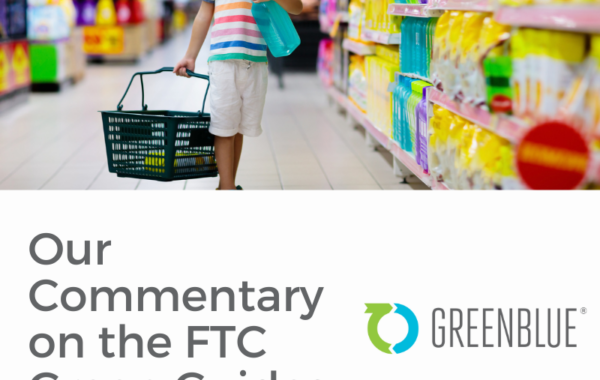October 9, 2020
SPC’s first fully virtual event – Virtual SPC Advance – set forth the theme of ‘Sustainable Resilience in a Time of Change’. Advancing packaging sustainability requires looking at packaging as part of a larger product-package system, which in turn, is part of our overall system of commerce that is currently facing massive disruption on many fronts – from concerns over the future of health and safety, to digital transformation, to the decarbonization of supply chains. The event’s plenary sessions covered a range of topics, from nature-based climate solutions to the deployment of new technologies and use of big data in order to illustrate how packaging sustainability is interwoven with a broader scope.
The world will need to remove about 10 billion tons of CO2 from the atmosphere every year by mid-century to be on track for a 1.5C degree temperature rise. Potential solutions are diverse ranging from forests and soil carbon, to energy and material efficiency, to carbon capture and new carbon-as-feedstock technologies. New technology and data are key to creating transparency for measuring and tracking where sustainable investments are needed and where they can have the most impact.
Nature-based carbon removal strategies include growing trees, restoring forests along with other ecosystems, which is projected to enhance the ability to sequester carbon in biomass and soils by also supporting soil water quality increasing biodiversity.
In the session Technology, Forests, and Climate Change we learned about the power of data in the USDA’s Forest Service Forest Inventory and Analysis (FSFIA) and how they are evolving to provide analytics-as-a-service through downloadable reports of their data findings, enabling users a better understanding of forest insights. For example the FSFIA can track how wood moves across the U.S., and where certain tree groups are thriving and declining.
In the session Advancing the Uptake of Earth Observations for Informing Agricultural, Sustainability and Food Security Decisions NASA Harvest explained how they utilize instruments normally used in space to learn about Earth. Satellites are continually passing over us collecting information. This data combined with new sensing technologies and Artificial Intelligence allows NASA to observe and measure the loss of topsoil and predict harvest yields. This data in turn supports regenerative investments and enables good management decisions. The FAO says that at current rates, we will run out of topsoil, critical to growing crops, in 55 years and so investments in land regeneration, sustainable agriculture, and widespread use of compost through programs such as compostnow.org, are critical strategies.
Recovered feedstock strategies include the wide spectrum of solutions offered by the circular economy and new technologies in material production. One cannot think about material flows without also considering climate change.
In the session Accelerating the Transition to a Circular Economy REMADE Institute shared their mission to reduce the embodied energy in materials, such as plastics, fibers, and e-waste. Reducing primary material consumption is an important strategy in fighting climate change as well as addressing the issues of waste management.
In another session Sustainable Packaging: Beyond Carbon Neutrality, Carbon180 expressed the need to fundamentally rethink our approach to managing climate change to not just limit emissions, but also to actively clean up the problem by removing carbon from the atmosphere. Carbon-as-feedstock technologies essentially look at fossil fuel extraction in reverse. In the future, we may start to use CO2 in our products, turning it back into chemical building blocks as a way to strengthen concrete and create new materials.
A key takeaway from these sessions is that industry needs a shift in mindset – from one of simply ‘doing no harm’ to one of becoming regenerative, and actually ‘doing good.’ It is important to source responsibly and recover more, but beyond this, it is also important to understand climate change and drive regenerative investments. We need more companies to find carbon removal opportunities in their supply chains, and to be innovators and capital investors in new technologies. For all of this to work, we need data that will inform where investments are best made and measure the impacts of those investments. Further, we need transparency from those who have access to such data.
Some players in the forest products sector are pioneering this new era of data transparency, which GreenBlue supports through industry tools like Forests in Focus. These types of data-driven tools enable industry to move forward more quickly with investments and interventions. However, we don’t yet have this level of transparency in other materials, like plastics. Yet, the sooner we get this, the easier it will be to move forward and reach critical sustainability objectives. Material tracing tools like the Recycled Material Standard (RMS) will be essential in this transition.
As noted in the closing remarks at Virtual SPC Advance, companies are starting to be more honest and more transparent about their impacts and investments. We see that industry is starting to shift into a results-oriented landscape. We need more of this. The time for talk is over – now it’s about doing something instead of only talking about what is possible to do. More than ever, people are looking to industry to take care of not only their wellbeing, but also the environment’s health. People are expecting action. As we barrel toward 2025, we have a meaningful time horizon to work towards. Industry will be asked what they have done versus what they will do.
The opportunities with big data and disruptive technologies are here against the heightened backdrop of environmental challenges. There is much investment occurring already, we just need more companies to cease this moment. With events like Virtual SPC Advance, we are able to engage larger audiences, with more participants than are possible in-person events. Perhaps a hidden blessing in these virtual engagements is their ability to catalyze action at scale and continue to move the needle forward for Sustainable Resilience in a Time of Change.





